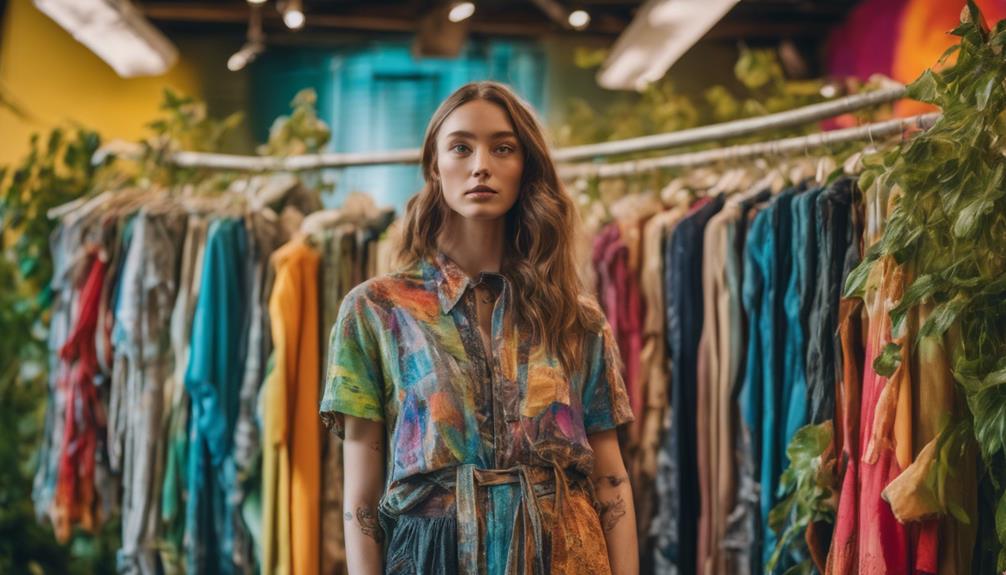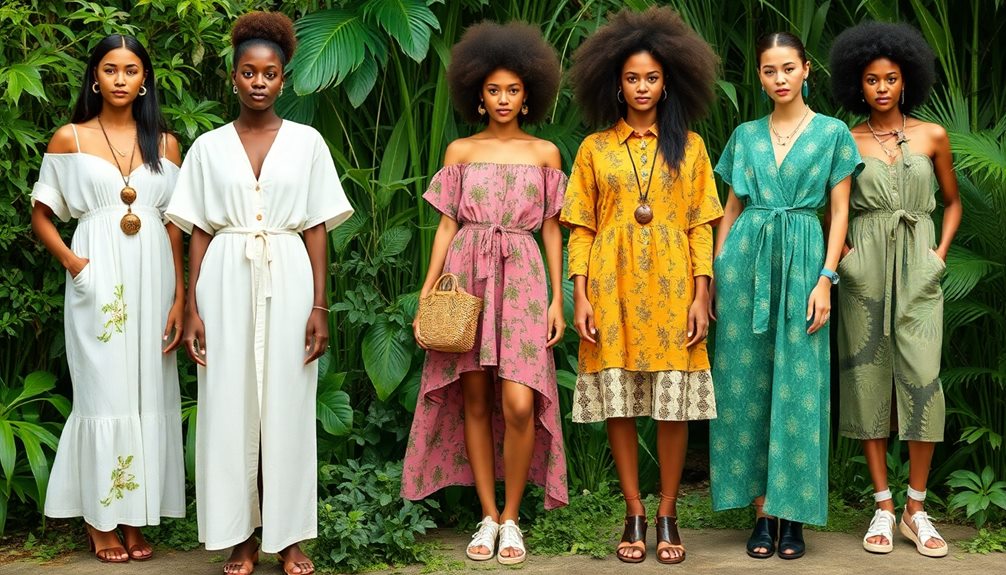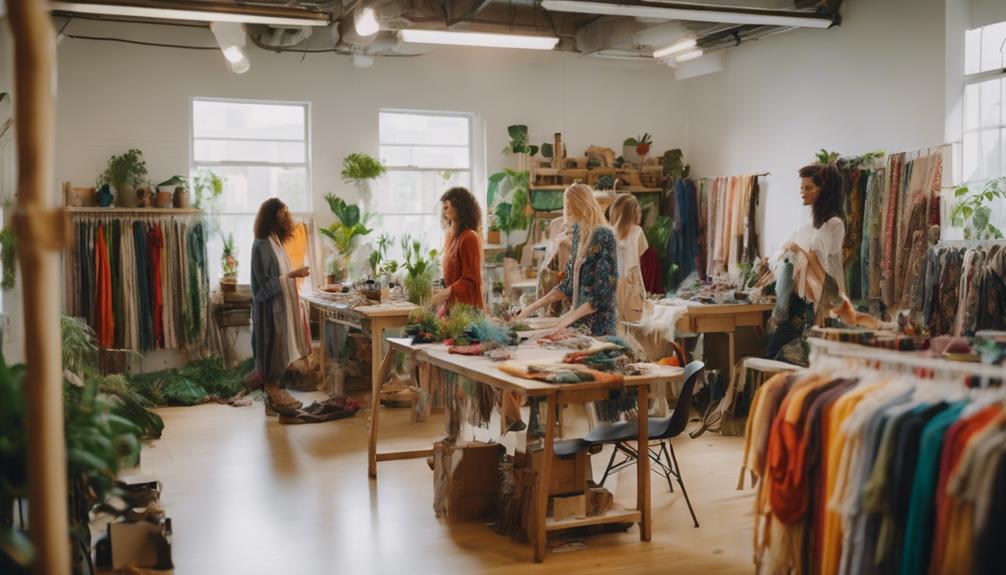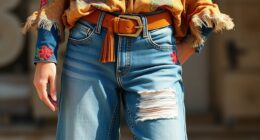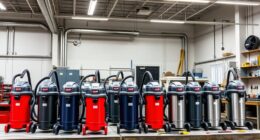If you believe that fast fashion brands cannot be sustainable, you may be surprised by Shein. Despite facing criticism, Shein has established a $50 million fund for waste reduction and eco-friendly initiatives. They have started using recycled fabrics and have implemented a clothing recycling program. While there are still doubts about their overall sustainability, these efforts indicate a move towards better practices. Brands like Zara and H&M are also working towards sustainability, but the competition is fierce. Keep an eye on these initiatives, as you may discover more unexpected leaders in sustainable fashion. Perhaps Shein could be a dark horse in the race to become a sustainable fashion brand winner. With its significant investment and concrete steps to reduce waste, Shein is positioning itself as a strong contender in the fast fashion industry. As more companies strive to embrace eco-friendly practices, it will be intriguing to see which brands ultimately emerge as the winners in sustainable fashion.
Key Takeaways
- Shein has launched a $50 million fund for waste reduction, indicating a surprising commitment to sustainability in fast fashion.
- Zara aims for a 100% sustainable cotton supply chain by 2023, showcasing significant efforts towards eco-friendly practices.
- H&M emphasizes circular fashion and transparency, with plans to achieve 100% sustainably sourced cotton by 2025.
- Certifications like GOTS and GRS are crucial in validating a brand's sustainability claims and commitment to ethical practices.
Defining Fast Fashion Sustainability
Fast fashion sustainability focuses on minimizing the environmental and social impacts of quickly produced clothing through ethical labor practices and eco-friendly materials. It's about recognizing the significant environmental impact of the fast fashion industry, which generates 20% of global wastewater and 10% of carbon emissions.
Sustainable fashion brands are stepping up to address these challenges, committing to ethical supply chains and implementing circular fashion initiatives. You might've noticed brands like Zara and H&M making promises to become more sustainable. For instance, Zara aims for a toxic chemicals-free supply chain, while H&M plans to be climate-positive by 2040.
However, it's important to remain skeptical, as many of these initiatives can sometimes feel like greenwashing rather than genuine efforts. As a conscious consumer, you can advocate for transparency and hold brands accountable for their commitments.
Shein's Surprising Sustainability Efforts

Shein is making strides in sustainability with a $50 million fund aimed at waste reduction and eco-friendly initiatives. This commitment reflects a growing awareness of the environmental impact of fast fashion brands. By adapting towards more sustainable materials, Shein has begun incorporating recycled fabrics into its collections, which is a step in the right direction.
Despite the criticism surrounding its disposable fashion model, Shein has launched a clothing recycling program that encourages you to return unwanted items, promoting a circular economy. This initiative shows that the brand is aware of its role in reducing waste and is taking action to improve its practices.
Additionally, Shein plans to enhance transparency in its supply chain by releasing detailed sustainability reports. This move addresses concerns about its environmental and labor practices and signals a willingness to be held accountable.
As you explore the evolving landscape of fast fashion, keep an eye on Shein's efforts. While challenges remain, their recent initiatives suggest a potential change towards greater sustainability, which may surprise many who associate the brand solely with disposable fashion.
Zara's Commitment to Change
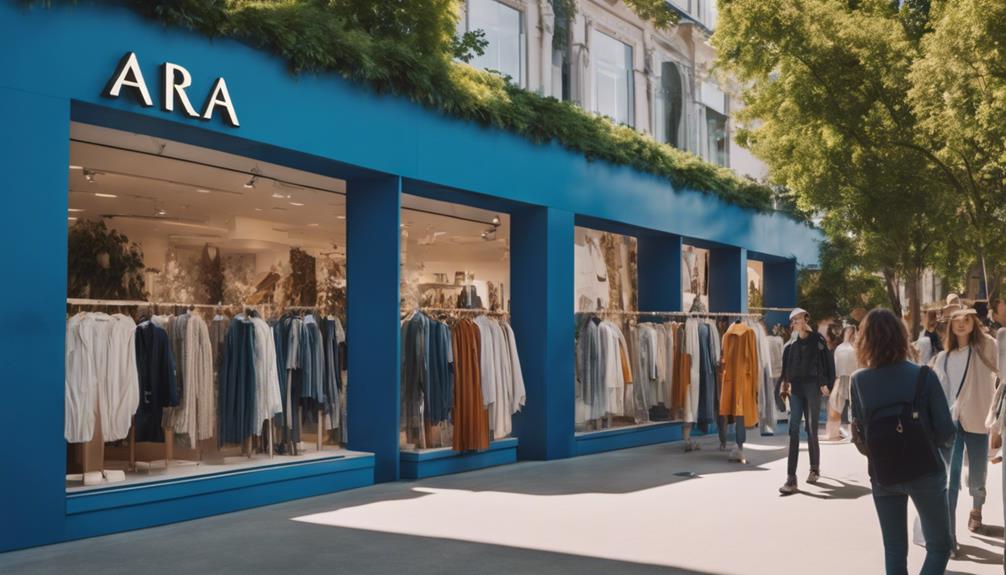
Zara is stepping up its game in the sustainable fashion arena, aiming for a toxic chemicals-free supply chain and a commitment to 100% sustainable cotton by the end of 2023. As a leading fast fashion retailer, Zara has launched the 'Join Life' initiative, focusing on eco-friendly practices that incorporate organic, recycled, and sustainable materials in its collections.
To further its sustainability efforts, Zara has pledged to implement a circular economy model by 2030, promoting recycling and waste reduction throughout its production processes. In 2020, it reported that 100% of its trunks were made from recycled or renewable fibers, showcasing a strong commitment to sustainable production.
However, despite these positive steps, Zara still faces criticism regarding transparency in its supply chain and the inherent rapid production cycle that often characterizes fast fashion. Consumers are increasingly aware of these issues and demand more detailed information about the sourcing and manufacturing processes behind their clothing.
H&M's Sustainability Initiatives
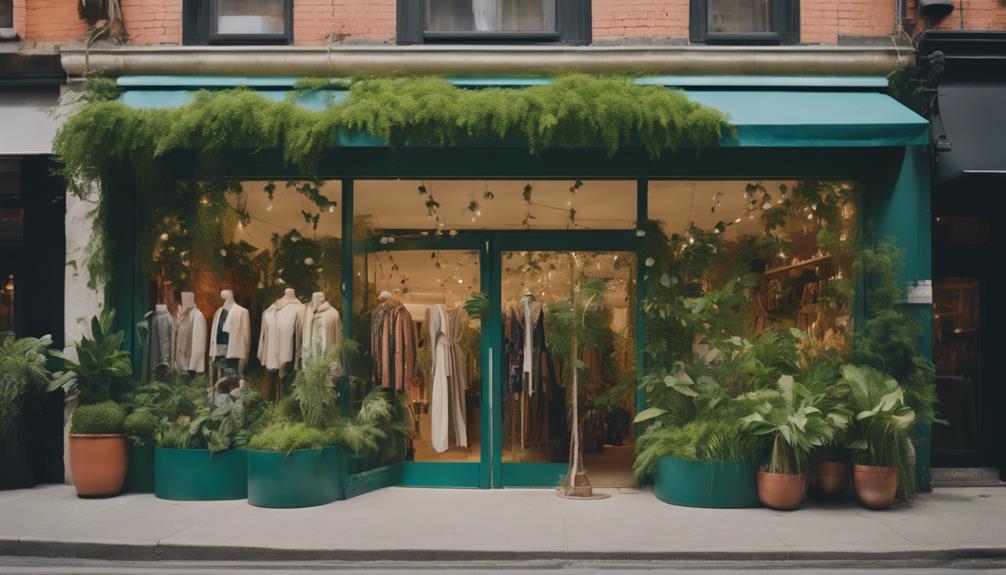
H&M's sustainability initiatives focus on circular fashion, sustainable material sourcing, and supply chain transparency.
You'll see the brand pushing for a significant increase in recycled materials and offering recycling programs to encourage responsible consumption.
Plus, their commitment to transparency guarantees you know where your clothes come from and how they're made.
Circular Fashion Commitment
As the fashion industry faces increasing scrutiny over its environmental impact, H&M's commitment to achieving a circular fashion model by 2030 is a significant step towards sustainable practices. This initiative emphasizes the use of sustainable materials, aiming to incorporate only recycled or sustainably sourced fibers in its production processes. Since 2011, H&M's Conscious collection has showcased garments made from organic cotton and recycled materials, demonstrating their dedication to sustainability.
Furthermore, H&M actively promotes recycling through its garment collecting initiatives, with over 140 million garments collected from customers. This not only reduces waste but also encourages a culture of circular fashion where clothes are recycled and reused. By 2025, H&M plans for 100% of its cotton to be sustainably sourced, including organic and recycled varieties, further solidifying its commitment to sustainable production.
Additionally, the company's goal to eliminate toxic chemicals from its supply chain is essential for creating a healthier environment. These steps collectively illustrate H&M's determination to transform the fashion industry, making it more sustainable and responsible as they work towards a circular economy.
Sustainable Material Sourcing
Sustainable material sourcing is at the core of H&M's strategy to minimize its environmental impact and promote responsible fashion practices. The brand has committed to using 100% recycled or sustainably sourced materials by 2030, which is a significant step for fast fashion companies.
H&M's Conscious Collection, launched in 2011, features organic cotton and recycled polyester, with recent reports showing that 50% of the materials in this collection are sustainably sourced.
To tackle environmental waste, H&M has introduced a clothing recycling program that encourages you to return unwanted garments in-store, promoting circular fashion and reducing textile waste. This initiative aligns with their goal of decreasing the carbon footprint associated with fashion production.
As of 2022, H&M reported that 65% of its materials were sourced sustainably, showcasing their commitment to improving sourcing practices. Additionally, the company aims to achieve a toxic chemicals-free supply chain by 2025, ensuring harmful substances are eliminated from production processes.
Transparency in Supply Chain
Transparency in supply chain practices plays a significant role in H&M's sustainability initiatives, ensuring customers understand the origins and processes behind their clothing.
The brand's Conscious collection aims for 50% of its materials to be sustainable by 2030, showcasing its commitment to transparency and accountability. H&M actively encourages garment recycling through programs that allow you to return used clothes, promoting a circular fashion model that reduces textile waste.
H&M has set clear goals to utilize only recycled and sustainably-sourced materials by 2030, making it easier for you to see how the brand is progressing in its sustainability efforts. They publish an annual sustainability report detailing advancements and the conditions of their factories, reinforcing their commitment to transparency in the supply chain.
While H&M has faced criticism for vague sustainability claims, they're working hard to improve transparency through audits and partnerships focused on ethical labor practices. By emphasizing these initiatives, H&M aims to build trust and demonstrate that sustainable fashion isn't only possible but also achievable for you as a conscious consumer.
Evaluating Brand Transparency
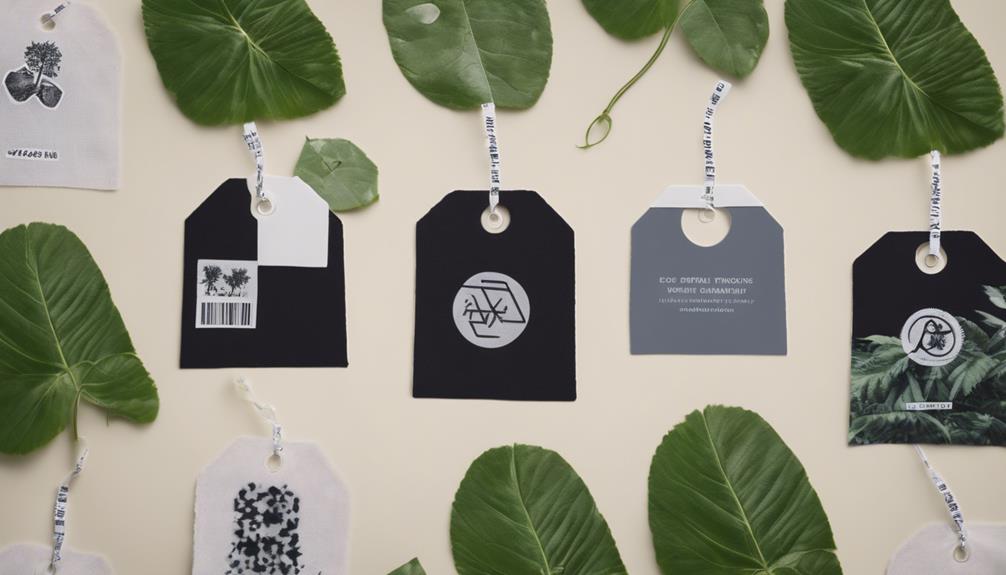
When you evaluate a brand's transparency, the supply chain details and certifications matter.
You'll want to see if they provide clear information about their production processes and adhere to standards like GOTS or GRS.
This transparency not only builds trust but also helps you make informed choices about sustainable fashion.
Importance of Supply Chain
Understanding a brand's supply chain is essential for evaluating its sustainability claims and making informed purchasing decisions. By examining the transparency of a brand's supply chain, you can uncover the ethical and environmental practices behind their clothing, which plays a vital role in determining their sustainability.
Here's a quick overview of brands and their supply chain transparency:
| Brand | Transparency Level | Ethical Practices |
|---|---|---|
| Patagonia | High | Fair labor, recycled materials |
| Everlane | High | Radical transparency, ethical factories |
| H&M | Medium | Some sustainable initiatives but lacks full disclosure |
| Zara | Medium | Limited transparency, accused of greenwashing |
| ASOS | Low | Minimal information, often criticized for practices |
Brands that provide detailed information about their sourcing and manufacturing processes are often more credible in their sustainability claims. Tools like the Fashion Transparency Index can help you identify which brands prioritize ethical labor practices and environmental responsibility. Remember, a lack of transparency can lead to accusations of greenwashing, so choose wisely!
Certification and Standards
Steering the world of sustainable fashion requires you to pay close attention to certifications and standards that validate a brand's commitment to ethical practices. Many brands throw around the term 'sustainable fashion,' but without regulation, it's crucial to seek those that back up their sustainability claims with credible certifications.
Look for certification standards like the Global Organic Textile Standard (GOTS) and the Global Recycle Standard (GRS), which guarantee compliance with strict environmental and social criteria. Brands that achieve B Corporation certification undergo rigorous assessments, giving you a benchmark for transparency and accountability.
The Fashion Transparency Index also plays a critical role; it evaluates brands based on their disclosure of supply chain information, with higher scores indicating better practices regarding labor and environmental impacts.
Be wary of greenwashing—when brands exaggerate their sustainability efforts. By researching and verifying claims through credible certifications and transparency reports, you can make informed decisions.
This way, you're not just supporting fast fashion; you're championing genuine sustainable practices that make a real difference.
The Role of Certifications
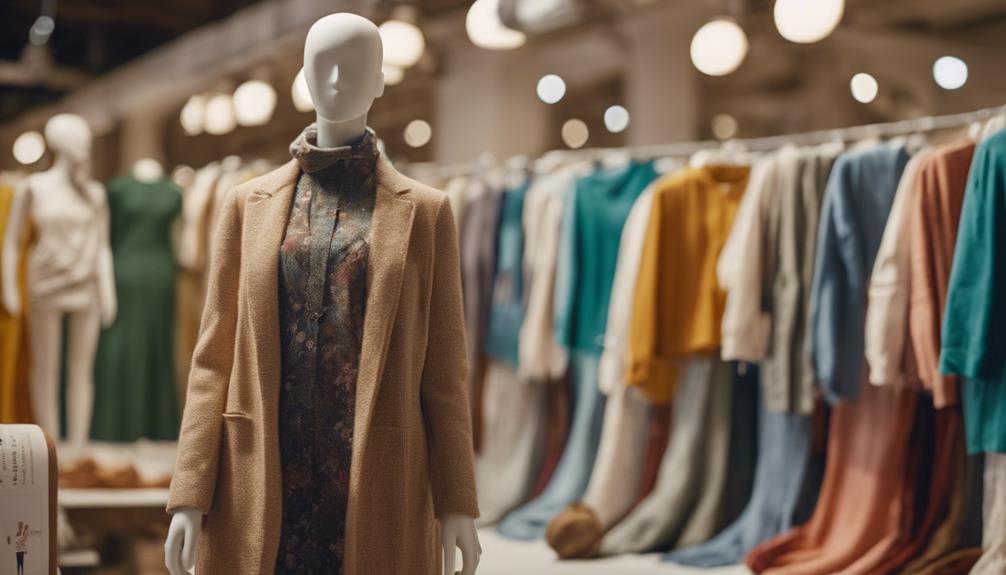
Certifications play an essential role in ensuring that sustainable fast fashion brands uphold their commitments to eco-friendly practices and ethical production. By obtaining certifications like the Global Organic Textile Standard (GOTS) and the Global Recycled Standard (GRS), brands demonstrate their dedication to sustainable practices and transparency in their supply chains. These certifications verify that the materials used are environmentally friendly and ethically sourced.
Brands recognized as B Corporations, such as Girlfriend Collective and Paka, adhere to rigorous environmental and social performance standards. This showcases their commitment not just to profit, but to the planet and people as well. The Fashion Transparency Index also evaluates brands on their supply chain practices, allowing you to see which companies prioritize accountability and ethical labor practices.
Moreover, certified brands often provide detailed environmental impact reports, helping you make informed choices about your purchases. The presence of certification labels is critical in combating greenwashing, as they require brands to meet specific criteria to support their sustainability claims. By paying attention to these certifications, you can confidently support brands that truly prioritize sustainability.
Consumer Awareness in Fashion

As a consumer, it's essential to recognize greenwashing tactics that brands use to appear sustainable without making real changes.
By supporting ethical brands, you can help drive the fashion industry toward more responsible practices.
Together, your choices can shape a more sustainable future in fashion.
Identifying Greenwashing Tactics
While many brands tout their eco-friendly initiatives, it's essential for you to recognize the subtle tactics of greenwashing that can mislead consumers about their true sustainability practices.
In the fast fashion industry, brands often make vague claims about sustainability without providing transparent evidence. For example, H&M's Conscious collection has faced criticism for lacking clear metrics on its sustainability efforts.
Brands like Zara and Uniqlo promote recycling programs but maintain high production volumes, contributing to significant environmental harm. This contradiction raises questions about their commitment to genuine sustainability. The Fashion Transparency Index shows that many leading fast fashion brands lack thorough supply chain disclosure, making it difficult for you to assess the legitimacy of their claims.
Moreover, companies like Allbirds have been scrutinized for overstating their sustainability efforts, particularly regarding the sourcing of materials like wool.
To avoid falling victim to misleading marketing strategies, you should engage in critical consumer evaluation. Utilize resources like Good On You and Remake's Sustainable Brand Directory to verify brands' sustainability practices and make informed choices in your fashion purchases.
Supporting Ethical Brands
Supporting ethical brands empowers you to make informed fashion choices that align with your values for sustainability and social responsibility. By choosing sustainable clothing brands, you're not just buying clothes; you're supporting ethical factories that prioritize fair labor practices. With 66% of consumers willing to pay more for these brands, your choice sends a powerful message to the fashion industry.
Consumer awareness is essential, especially when it comes to transparency in supply chains. A staggering 73% of shoppers believe brands should disclose their production processes and materials used. Yet, the Fashion Transparency Index reveals that only 40% of brands share this important information. By asking for greater accountability, you can help drive change.
Look for certifications like Fair Trade Certified and GOTS when shopping, as 57% of consumers see these labels as key factors in their decisions. Supporting brands that are carbon neutral or committed to sustainable practices not only benefits the environment but also fosters a culture of responsibility.
As you embrace second-hand and vintage shopping, remember that your choices can lead to a more ethical and sustainable fashion future.
Impact of Manufacturing Practices
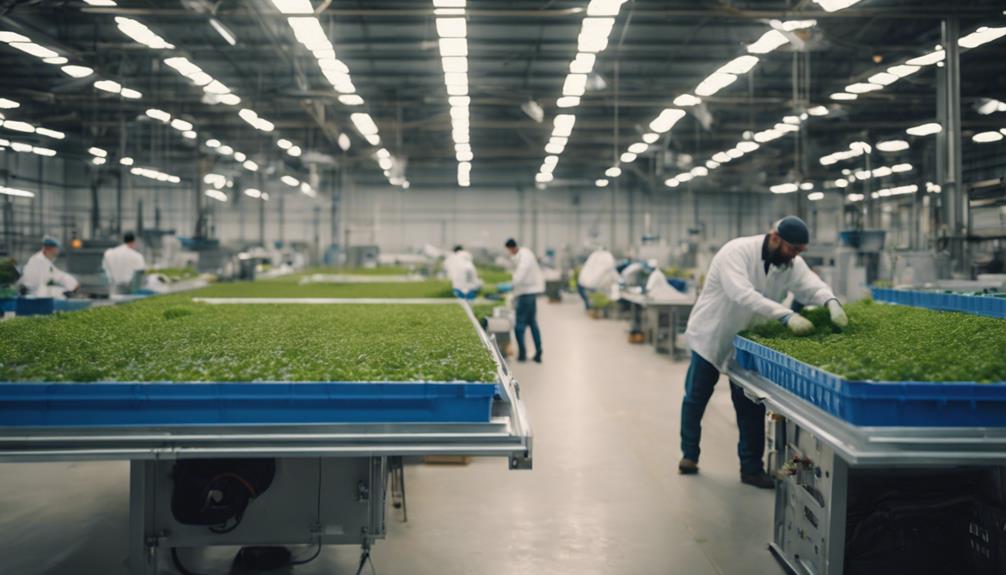
Manufacturing practices in the fast fashion industry are a major contributor to environmental degradation, consuming vast resources and generating excessive waste. The impact of these practices is staggering; for instance, producing just one pair of jeans requires about 7,000 liters of water. Fast fashion brands prioritize speed and cost, resulting in the production of around 3 billion garments annually, which leads to significant waste and pollution.
The manufacturing process accounts for 20% of global wastewater, underscoring the urgent need for more sustainable practices in this sector. While some fast fashion companies are beginning to adopt circular manufacturing models, they often face criticism for vague sustainability claims and a lack of transparency in their supply chain.
However, you might notice a shift toward using sustainable materials, such as organic cotton and recycled fabrics. For example, Zara has committed to using 100% sustainable materials by 2040. While these efforts are commendable, it's crucial to scrutinize how effective they truly are in mitigating the environmental impact of fast fashion.
Your choices as a conscious consumer can help drive the demand for genuine sustainability in the industry.
Alternative Sustainable Brands
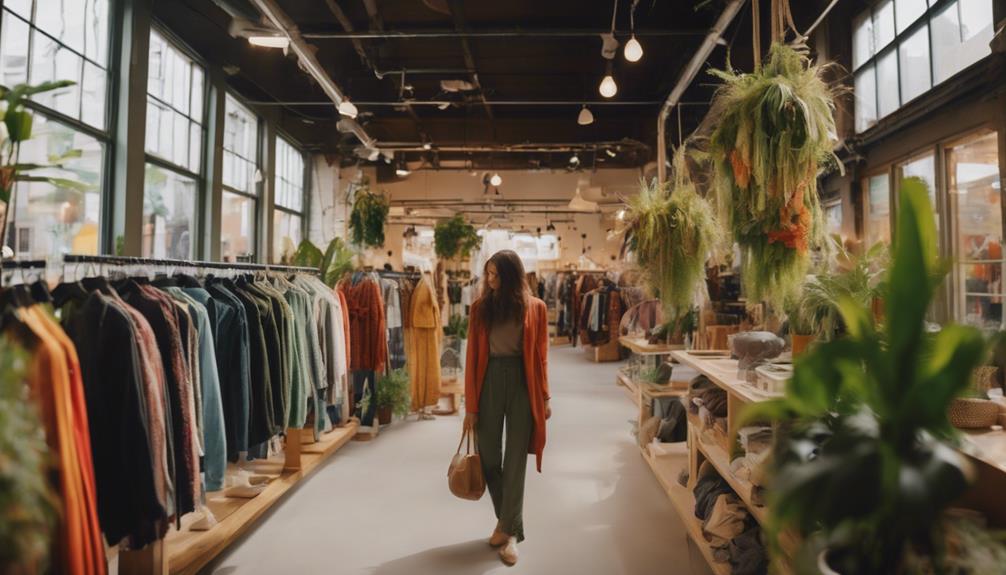
Alternative sustainable brands are revolutionizing the fashion industry by prioritizing eco-friendly materials and ethical production practices.
By choosing brands like Girlfriend Collective, you can wear activewear made from recycled materials, such as water bottles and fishing nets, all in 100% recyclable packaging.
Outerknown offers eco-conscious essentials, with 90% of fibers sourced from organic, recycled, or regenerated materials, ensuring better working conditions for their laborers.
Nudie Jeans stands out for its commitment to sustainable clothes, using exclusively organic, fair trade, or recycled cotton, with 95% of fibers being sustainable.
Reformation isn't just about fashion; it's climate-neutral certified and aims to become climate positive by 2025 while providing transparency through environmental impact reports.
Patagonia leads the way in outdoor apparel, utilizing Fair Trade Certified factories and donating 98% of its stock to combat climate change.
These brands demonstrate that you can embrace slow fashion without compromising style.
Community Engagement in Fashion
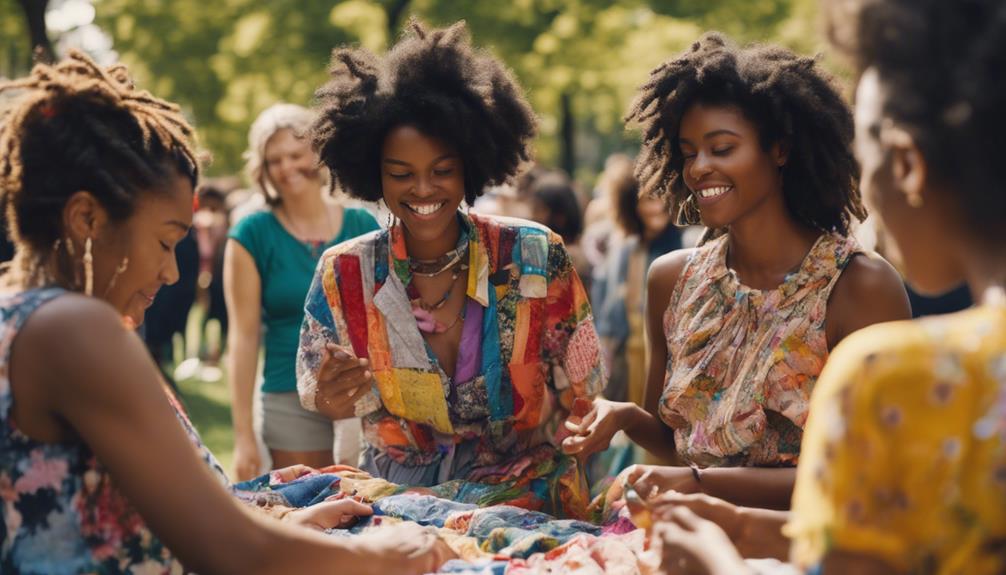
Community engagement in fashion fosters sustainable practices and builds connections, making it easier for you to adopt eco-friendly habits. By getting involved, you can transform your shopping and lifestyle choices while supporting your community.
Here are some ways to engage:
- Clothing Swaps: Participate in local events to exchange clothes with others, revitalizing your wardrobe without contributing to waste.
- Local Thrift Shops: Shop at thrift stores to find unique pieces while promoting responsible consumption and supporting local economies.
- Repair Workshops: Join workshops that teach you how to fix and upcycle your clothing, extending the life of your garments and reducing landfill waste.
- Sustainable Fashion Events: Attend events that focus on sustainable fashion, where you can learn about eco-friendly brands and practices from fellow community members.
Frequently Asked Questions
Which Fashion Brand Is the Most Sustainable?
When considering which fashion brand is the most sustainable, you'll find options like Reformation and Patagonia lead the way. Their practices focus on eco-friendly materials, ethical labor, and transparency in production, making them top choices.
What Are Fast Fashion Brands Doing to Be More Sustainable?
Imagine a garden transforming weeds into flowers. Fast fashion brands, like H&M and Zara, commit to sustainability by using organic materials and launching recycling programs, while Shein invests in sustainability initiatives, despite its disposable fashion reputation.
Is Zara Sustainable or Fast Fashion?
You might find Zara's sustainability efforts intriguing, but it's still primarily a fast fashion brand. Its quick production cycles and transparency issues raise concerns about whether it can genuinely achieve its sustainability goals.
Are Zara and H&M Sustainable?
Like a mirage in the desert, both Zara and H&M promise sustainability but often fall short. Their fast fashion models counteract their initiatives, leaving you questioning the true impact of their efforts on the environment.
Conclusion
In the ever-evolving landscape of fast fashion, it's clear that sustainability isn't just a buzzword—it's a commitment brands must embrace.
While giants like Shein, Zara, and H&M make strides, true transparency and ethical practices are key.
As a consumer, your choices can spark a ripple effect, urging brands to prioritize the planet.
Remember, every garment you choose can be a step toward a greener future; it's time to wear your values with pride!
